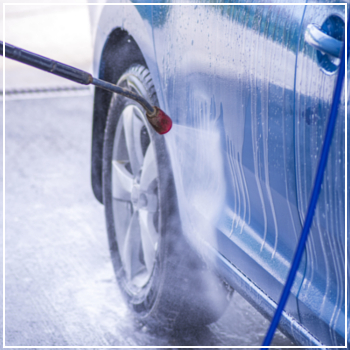In recent times, doing it yourself and pressure washing your car at home has become increasingly appealing. However, without fully understanding how to use a pressure washer, you might end up doing more harm than good. High-pressure streams can easily strip off the paint, expose the metal, and increase the chances of rust forming. Before you dive into this DIY task, here’s everything you need to know about pressure washing your car. Contrary to what many believe, pressure washing isn’t just about turning on a high-powered hose. Pressure washers come in two main types—electric and gas-powered—and each has its own pros and cons. Electric models are generally safer for delicate surfaces like car exteriors, while gas-powered ones offer more raw power, which can be risky if not handled carefully. When pressure washing, it's crucial to pay attention to PSI (pounds per square inch) and GPM (gallons per minute). The PSI determines the force of the water stream, while the GPM measures the volume of water being discharged. Together, they form the cleaning unit, which should be between 1,200 and 1,900 PSI and 1.4 to 1.6 GPM for a car. Going beyond this range can cause irreversible damage to your car’s paint and finish. Another important aspect is the angle of the nozzle. Nozzles typically range from 0 to 65 degrees, with lower-degree angles offering a sharper, more focused stream. A nozzle set at 15 degrees or higher is perfect for rinsing and applying soap, whereas a narrower angle can damage the paint. Lastly, ensure you’re washing your car in a safe, open space far from your home, plants, or pets. The powerful spray can damage surrounding objects and cause injuries if aimed incorrectly. Before you start, make sure all doors, windows, and the trunk are closed. Begin by rinsing off any loose dirt and debris from the car’s surface. Stand back at least four to five feet and prepare to apply soap afterward. If you're using a brush attachment, make sure it’s clean to avoid scratching the car with trapped dirt particles. Despite its popularity, pressure washing isn’t without its risks, and many DIY enthusiasts underestimate the potential consequences. High PSI levels can easily chip or scratch the paint, leading to rust and corrosion. Additionally, the high-pressure stream can cause small stones and debris to grind against the car's surface, further damaging it. Here are some common mistakes that can lead to costly repairs: If you're unsure about handling the pressure washer, it’s always best to leave the job to professionals. At DaSilva’s Auto Body, we specialize in exterior detailing and rust removal services. Our team ensures your car looks its best while preventing future damage. Give us a call at our Naugatuck location to schedule an appointment today. Automatic Transmission Shifter Transmission Shift Assembly,Automatic Transmission Shifter,Aftermarket Auto Shifter,Shifter Assembly Auto Shifter Ningbo Yongxin Auto Parts Co., Ltd. , https://www.yongxinautoparts.com Many DIY car enthusiasts swear by pressure washing as the ultimate way to get rid of all the grime and leave your car looking brand-new. It’s often seen as a quicker alternative to hand-washing and waxing, saving time and effort.
Many DIY car enthusiasts swear by pressure washing as the ultimate way to get rid of all the grime and leave your car looking brand-new. It’s often seen as a quicker alternative to hand-washing and waxing, saving time and effort.Mastering the Art of Pressure Washing
Potential Pitfalls to Avoid